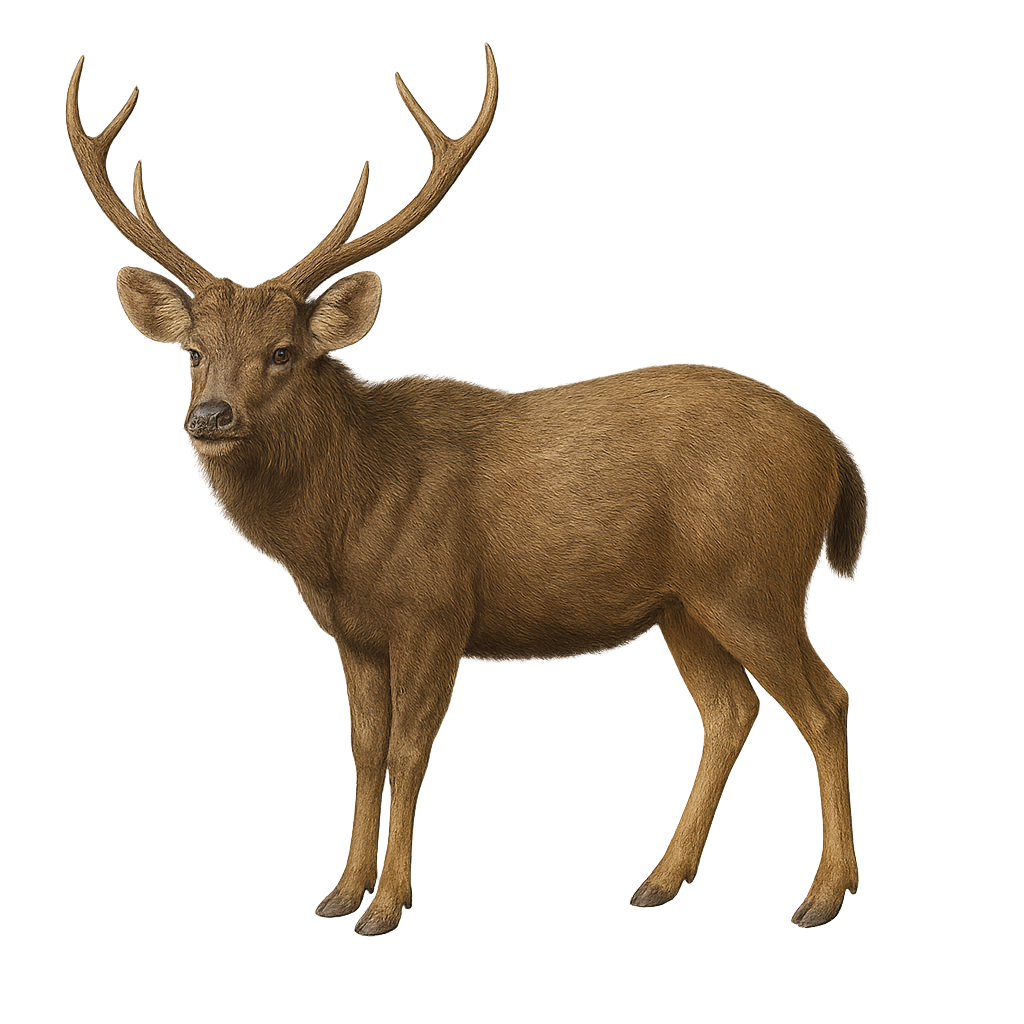Your wildlife photography guide.
Explore the sambar deer in detail, study its behavior, prepare your shots.
Where to observe and photograph the sambar deer in the wild
Learn where and when to spot the sambar deer in the wild, how to identify the species based on distinctive features, and what natural environments it inhabits. The WildlifePhotographer app offers tailored photography tips that reflect the sambar deer’s behavior, helping you capture better wildlife images. Explore the full species profile for key information including description, habitat, active periods, and approach techniques.
Sambar deer
Scientific name: Cervus unicolor

IUCN Status: Vulnerable
Family: CERVIDAE
Group: Mammals
Sensitivity to human approach: Suspicious
Minimum approach distance: 30 m
Rut period: September to October
Gestation: 240-250 jours
Births: May to June
Habitat:
Dense forests, grasslands, swamps
Activity period :
Mainly active at night, generally discreet during the day.
Identification and description:
The sambar, or Cervus unicolor, is a large deer native to South and Southeast Asia. It is recognizable by its dark brown coat and impressive antlers in males. Sambars primarily inhabit dense forests, grasslands, and swamps, feeding on leaves, fruits, and bark. They are generally solitary or live in small family groups. The sambar is a crepuscular animal, active mainly at dawn and dusk. Although hunted for its meat and antlers, it remains relatively widespread in its natural habitat. However, deforestation and overhunting threaten some local populations.
Recommended lens:
400 mm – adjust based on distance, desired framing (portrait or habitat), and approach conditions.
Photography tips:
To photograph the sambar, it is advisable to use a telephoto lens of 400 mm or more to capture detailed images without disturbing the animal. The best photo opportunities occur at dawn or dusk when the sambar is most active. Look for areas where natural light highlights the texture of its coat. Be patient and discreet to avoid scaring it, and use a tripod to stabilize your camera in low-light conditions.
The WildlifePhotographer App is coming soon!
Be the first to explore the best nature spots, track rutting seasons, log your observations, and observe more wildlife.
Already 1 432 wildlife lovers subscribed worldwide

